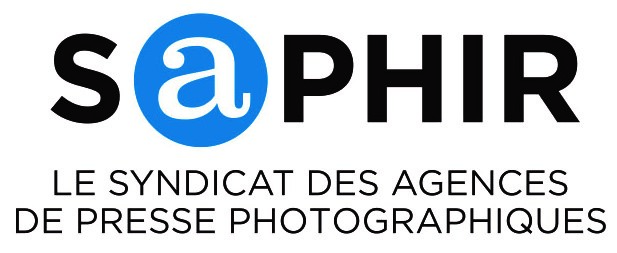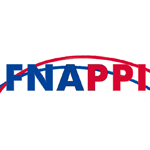On behalf of thousands of Image Providers, CEPIC (Center of the Picture Industry) has sent a Position Paper to the European Commission outlining its views regarding the insufficient protection of images online. The position paper provides policy recommendations on Framing, Host Provider Privilege and Implied Consent.
The Position Paper signals the start of a “Campaign for a Better Protection of Images Online” which aims at improving the legislative framework for image providers online and at bridging the “Value Gap” experienced also by other content providers: While more content is available online, benefits are increasingly realized not by those providing the content and bearing the costs but by internet platforms merely aggregating this content without the right holders consent.
Besides the Position Paper, the campaign will also encompass meetings with politicians in order to raise awareness for the serious concerns of the image industry.
Representing the entire image industry, CEPIC welcomes the views and support of other associations and companies. A summary of CEPIC`s Position Paper can be found below. If you are interested in joining the Campaign, please, contact CEPIC.
Executive Summary
Images have made the internet the vibrant and engaging place we enjoy today. Compelling, professionally produced imagery is essential for any website wishing to capture and retain the interest of web users globally. However, over the last 10-15 years, inadequate protection of images in the digital space has shifted the value from those that create images to those that provide the platforms for viewing and sharing images. Whilst all of the costs of production and distribution remain with the creators, the benefits are increasingly realised by aggregators that merely copy or display third party images at no cost. If this imbalance in the value chain persists, there will be less investment into creating tomorrow’s iconic images, as well as less innovation in bringing new images to market. There will ultimately be a less diverse and shallower pool of new images being made freely accessible for the enjoyment of all internet users. Imagine a world where selfies and holiday snaps are the dominant content or where all professionally produced photography resides online only behind locked doors.
In the interests of a Digital Single Market that is based on cultural diversity, accessibility and creativity, the InfoSoc and E-Commerce Directives should be amended to address:
- Framing. Online platforms and other websites are increasingly framing images instead of hosting the images and paying for a licence. Framing incorporates an image into a website so that a website visitor perceives the image as appearing on that website, even though the image is technically hosted on a third party site. Framing allows the framing website to gain all of the benefits of having the image appear on its website while bearing none of the costs (of hosting the image, of content licence fee, etc.). Framing fundamentally deprives image creators of recognition of their authorship, revenue and the ability to control where their images appear online. In addition, framing causes consumer confusion as are given the false impression that the content displayed is owned or otherwise licensed by the website operator placing the link. This in turn has significantly encouraged internet piracy over recent years. Regrettably, European copyright law does not sufficiently protect creators against framing. The current InfoSoc Directive does not allow the courts to make the crucial distinction between: (i) general hyperlinking (acceptable), where the user knowingly clicks through to another website to access the full information; and (ii) framing of images (unacceptable), which relies on the same underlying technology, but which deprives users of any incentive to click through to the source as the frame already reveals the full information directly on the framing website. It must be clarified that framing is reserved to the copyright holder as part of the right of communication to the public. Legislative proposals to ensure legality of hyperlinking must exclude framing.
- Liability exemptions. The picture industry is one of the biggest casualties of copyright laws lagging technological change. Individuals and businesses alike no longer have the same incentives to respect property online as they do offline. Individual infringers can easily hide behind online platforms that protect their identity, while the platforms themselves cannot be held liable as they currently benefit from liability privileges for “hosting providers”. The creators are left unprotected. It should be clarified that the liability privilege for hosting providers does not apply to platforms that (i) actively participate in the organisation and display of content; (ii) display the content as their own; and/or (iii) otherwise monetise the content (directly or indirectly – e.g., through advertising and utilising data).
- Implied consent. Some courts have assumed that image providers who do not use technical tools to block aggregators from crawling their sites and copying images impliedly consent to such aggregators’ use of their images. A website’s failure to use an “opt-out” mechanism such as the Robots Exclusion Protocol should not be interpreted as an implied licence. The lack of harmonisation of the (failed) concept of implied licences creates major uncertainty and undermines the idea of a Digital Single Market. There is a far better way that the fundamental role of search engines may be legitimised. A new exception should be implemented for search engines that defines how they may (and may not) reference images.
- The recommendations in this paper present solutions to the most pressing problems faced today by photographers and the image industry. They avoid the need to create a new ancillary copyright (akin to that granted to press publishers in certain countries) and therefore also avoid the associated challenges of equitable distribution by collecting societies amongst an ever increasing number of rightholders within the EU and beyond. Most importantly, the recommendations in this paper will allow market forces to allocate value more fairly whilst also providing a solid base upon which innovation, accessibility and creativity may flourish within the Digital Single Market.
For further questions or to access the full position paper, please contact
CEPIC President, Alfonso Gutierrez (president/at/cepic.org)
CEPIC Executive Director , Sylvie Fodor (s.fodor/at/cepic.org)
Legal Counsel, Dr Thomas Höppner (thomas.hoppner/at/hausfeld.com)
















